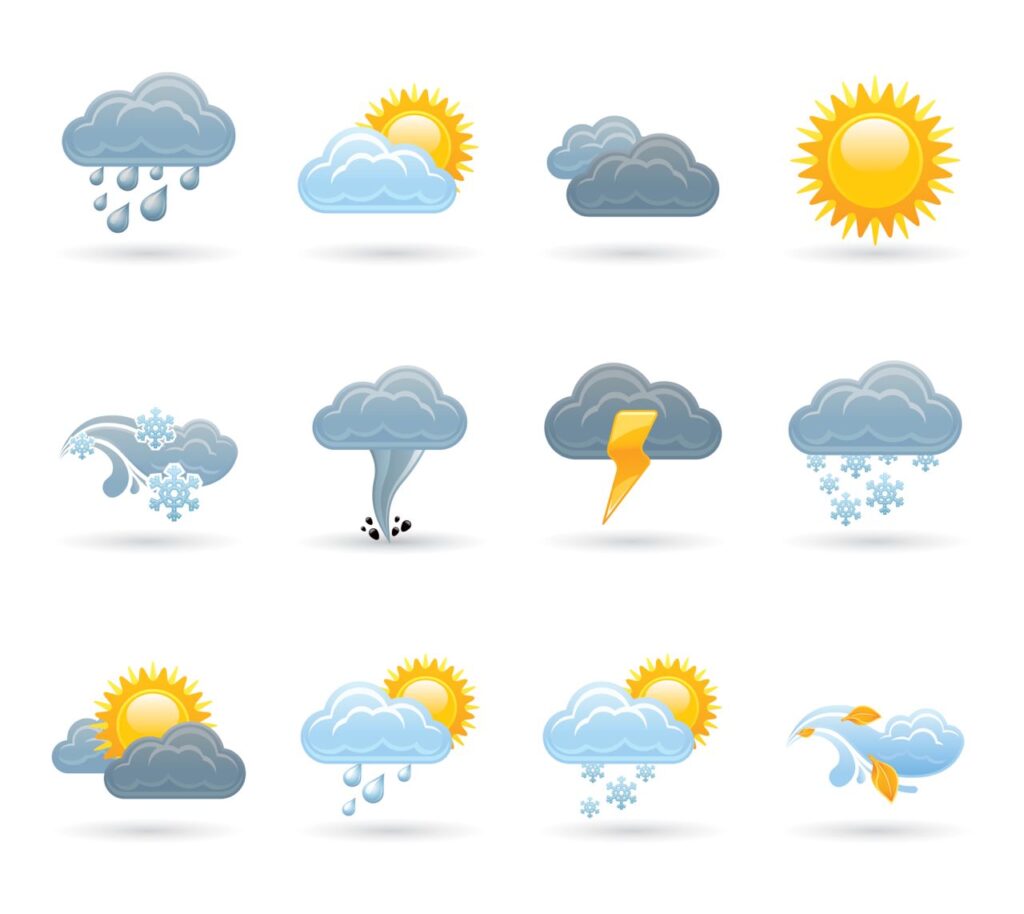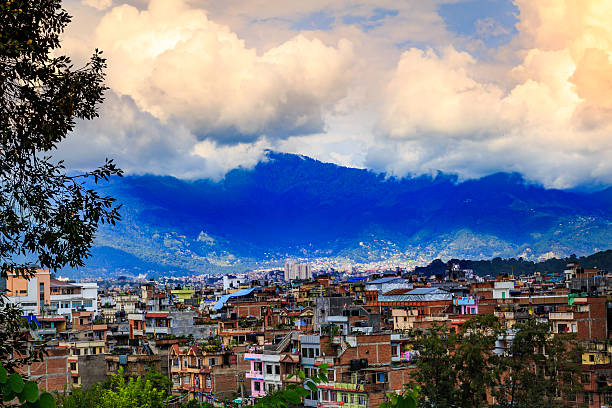Nepal is currently witnessing mixed weather patterns as the country experiences the combined influence of westerly winds, local winds, and moisture-laden air arriving from the Bay of Bengal. According to the Meteorological Forecasting Division (MFD), these climatic factors have led to varying weather conditions across the hilly, mountainous, and Terai regions.
As per the latest weather bulletin released by the Division, the interaction between the westerly disturbance and the moist air from the Bay of Bengal has contributed to increased cloud formation, especially in the hilly and mountainous regions. The afternoon forecast suggests that the hilly areas will be partly to generally cloudy, while the remaining parts of the country will experience partly cloudy skies.
Cloudy Skies and Localized Rainfall in the Hills
The MFD reports that the hilly regions of Nepal particularly in provinces such as Koshi, Bagmati, Gandaki, Lumbini, Karnali, and Sudurpashchim are likely to receive light to moderate rainfall this afternoon. These rains may be accompanied by thunder and lightning, especially in areas situated at higher altitudes. The weather office has advised caution in these areas due to the likelihood of thunderstorms and temporary strong gusts of wind.

Mountainous regions in particular are under closer watch. Light rain and snowfall have been predicted in select areas of the high-altitude zones of Koshi, Bagmati, Gandaki, and Karnali provinces. These weather patterns, though seasonal, may affect travel and trekking activities in these regions, especially in locations popular with both domestic and international tourists.
Tarai Braces for Strong Winds
While the hill and mountain regions grapple with cloud cover and precipitation, parts of the southern plains specifically the Terai region in Lumbini province are expected to face strong wind conditions. The MFD has forecast gusty winds in isolated areas of the Terai, which could potentially disrupt normal life and local transportation services. Residents in these areas are advised to secure loose objects, avoid traveling during high wind periods, and stay updated with local weather alerts.
Evening and Nighttime Weather Outlook
The evening and nighttime weather forecast continues to reflect the dominance of cloudiness in the hilly regions. According to the MFD, skies will remain partly to generally cloudy in the hills during the night. Meanwhile, the rest of the country particularly the lower plains and valley regions will experience relatively fair weather conditions.
Scattered rainfall activities will persist into the night in some hilly areas. Light to moderate rain accompanied by thunder and lightning is likely in one or two locations across the hilly regions of Koshi, Bagmati, Gandaki, Lumbini, Karnali, and Sudurpashchim provinces. This continued pattern of localized rainfall and thunderstorms could lead to temporary disruptions, particularly in outdoor and travel activities.
Snowfall Continues in Higher Elevations
Tourist-favored mountainous areas in Koshi, Bagmati, and Gandaki provinces are likely to experience light snowfall during the night. Trekking routes such as the Annapurna Circuit, Langtang, and the Everest region could witness mild snow showers, impacting visibility and trail conditions. Trekkers, guides, and tourism service providers are encouraged to monitor local forecasts and take precautionary measures when navigating high-altitude paths.

Impacts on Daily Life and Tourism
These weather conditions have direct implications on daily life, especially in regions dependent on agriculture, outdoor labor, and tourism. The precipitation, while beneficial for certain crops, may hinder daily wage labor and fieldwork in rural hilly areas. For tourists, cloudy skies and possible rain may affect scenic views and access to heritage and trekking sites.
In recent years, Nepal has become increasingly reliant on accurate weather forecasting to mitigate the impacts of sudden climatic changes, especially in vulnerable regions such as the high Himalayas and flood-prone Terai areas. The presence of thunderstorms and wind gusts, particularly during transitional seasons like spring and monsoon prelude, poses risks such as landslides, flash floods, and infrastructure damage.
Precautionary Measures and Advice
The Meteorological Forecasting Division has urged the public, especially those in vulnerable zones, to remain alert and follow weather updates through official channels. Travelers, mountaineers, and trekkers are advised to make flexible travel plans and be equipped for sudden weather changes. Authorities have also advised local governments and emergency responders in Terai and mountainous districts to be on standby in case of weather-related emergencies.
Farmers are encouraged to harvest and store crops in secure areas as the unpredictable weather might lead to post-harvest losses. Likewise, domestic flights, which are sensitive to weather conditions in Nepal’s mountainous terrain, may experience temporary delays or cancellations due to reduced visibility and storm risks.

Nepal’s weather is currently shaped by a dynamic interaction of westerly disturbances, local winds, and moist air from the Bay of Bengal. These elements are contributing to partly to generally cloudy skies in hilly regions, isolated rain and snowfall in mountain areas, and strong winds in parts of the Terai.
While the weather remains manageable in most areas, localized rain, lightning, and snow are expected to create temporary disruptions. The Meteorological Forecasting Division continues to monitor the situation closely and urges the public to remain cautious, especially in regions prone to extreme weather impacts.
For the latest weather updates, citizens and tourists are encouraged to follow announcements from the Department of Hydrology and Meteorology or access real-time data via their official website and mobile apps.






